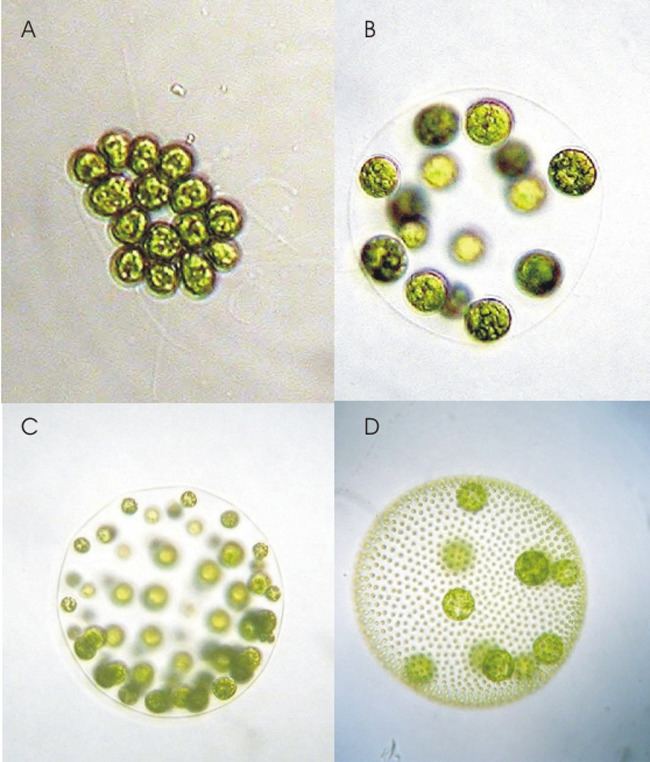Domain Eukaryota Division Chlorophyta | Kingdom Plantae Class Chlorophyceae | |
 | ||
Order Volvocales
Oltmanns, 1904, orth. bot. | ||
In taxonomy, the Volvocales, also known as Chlamydomonadales, are an order of flagellated or pseudociliated green algae, specifically of the Chlorophyceae. Volvocales can form planar or spherical colonies. These vary from Gonium (four to 32 cells) up to Volvox (500 cells or more). Each cell has two flagella, and is similar in appearance to Chlamydomonas, with the flagella throughout the colony moving in coordination.
Both asexual and sexual reproduction occur. In the former, cells divide until they form new colonies, which are then released. In the smaller forms, typically all cells are involved, but larger forms have anterior vegetative and posterior reproductive cells. Sexual reproduction varies from isogamy (both genders produce flagellated gametes of equal size) to oogamy (one gender produces a much larger, nonmotile gamete).
The classification of the Volvocales varies. Very often they are taken to include the orders Chlamydomonadales and Dunallielales, which contain closely related unicellular flagellates, as suborders.
